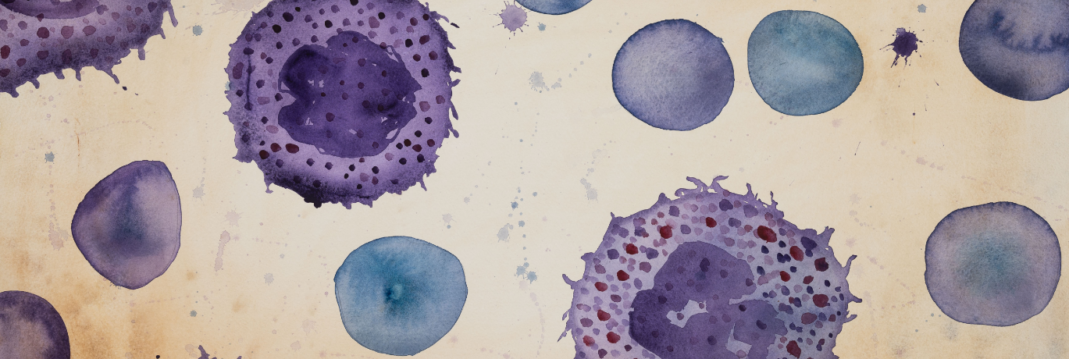Customer testimonials
Human ES cells
“To be brief. WOW!”
“I know it sounds weird, but again, WOW.
I wasted so much time on other stuff.”
Dr. Yaqub (Jacob) Hanna
Weizmann Institute of Science, Israel
Human PSC & hematopoietic cells
“By introducing the use of LN521, shifting our culture methods away from relying on murine feeders or other less defined substrates, we have simplified the day-to-day expansion of our human pluripotent stem cells (hPSC) and significantly reduced the amount of required operator time. Having worked extensively with other culture methods for hPSCs, and thereby familiar with the high costs of consumables required, I am pleased to find that our new costs are only a fraction (7%) of what they used to be when we relied on traditional methods that used murine embryonic fibroblasts (MEF).”
“In our efforts to study the development of blood, we have found that keeping our hPSCs on LN521 is compatible with subsequent differentiation towards the hematopoietic lineage, further adding to the usefulness of this substrate regarding our experiments.”

Dr. Roger E. Rönn,
Univ. of Edinburgh, Scotland
Megakaryocytes & platelets
“Our iPSC culture on LN521 is easy and stable. The use of LN521 allows us to maintain the iPSCs in monolayer culture for a prolonged time and also supports the differentiation of MKs and PLTs. It represents a good alternative to other matrices especially as it is fully defined and therefore compatible with GMP standards.”
Dr. Dorothee Eicke
Hannover Medical School, Germany
The animal origin-free and defined protocol for the generation of functional megakaryocytes and platelets from an HLA-universal iPSCs on the human recombinant laminin-521 culture substrate was published in Molecular Medicine, 2016.
Satellite cells
“Laminin-521 shifts away from the paradigm that muscle cells lose their ability to differentiate after culturing.”
“Muscle differentiation on laminin-521 is nothing short of spectacular, yielding increased numbers of nuclei per myotube and improved myotube organization. Surprisingly, muscle cells expanded on laminin-521 maintain their ability to differentiate into myotubes after long-term passaging, better-resembling differentiation of freshly isolated cells.”
“Muscle cells grow 2-3 times more rapidly on laminin-521 compared to other substrates. On laminin-521, 90-100% of muscle cells are simultaneously in the cell cycle compared to about 50% or less on other commonly utilized substrates. I believe by attaining uniform expansion it may be possible to reduce selection processes that often plague traditional muscle cell culture.”
“For drug discovery purposes, laminin-521 allows you to rapidly expand muscle cells into 100 million cells or greater while maintaining excellent differentiation; it’s a win-win.”

Dr. Christopher Penton
Icagen, Inc., Tucson, Arizona, USA
Read how laminin-521 maintains the differentiation potential of mouse and human satellite cell-derived myoblasts during long-term culture expansion, published in Skeletal Muscle, 2016.
Hepatocytes
“The use of recombinant laminins in conjunction with our differentiation systems have significantly advanced stem cell-derived hepatocyte performance and polarity. Importantly, those processes are now fully defined, and GMP ready, offering an exciting prospect for human regenerative medicine.”

Dr. David Hay
MRC Centre for regenerative medicine,
University of Edinburgh, UK
Read more about how human recombinant laminins drive the differentiation and self-organization of hESC-derived hepatocytes in Stem Cell Reports, 2015.
Dopaminergic neurons
“We have struggled for a number of years to establish a GMP manufacturing process for generating DA neurons from human embryonic stem cells in order to develop a stem cell-based therapy for Parkinson’s Disease. The recombinant laminins from Biolamina really made a world of difference! We now routinely use LN521 and EDTA for passaging the pluripotent stem cells and we have greater efficiency than ever before.”
“It also turns out that the DA progenitor cells love to grow on LN111 and after introducing this into our protocol we now have a high yield, high-quality GMP differentiation ready to use”

Prof. Malin Parmar
Lund University, Sweden
A GMP differentiation protocol for highly efficient and reproducible production of transplantable dopamine progenitors from hESCs on laminin-111 have been published inCell Stem Cell, 2016.
NPC and neurons
“We have discovered LN521 is far superior to all other alternative ECMs we have tried for hPSC culture, and have switched all our hiPSC and hESC lines to LN521 for maintenance. As a result, our hPSC lines have become more stable, yields increased and survival improved dramatically on passage. We can now perform more experiments with each flask and do so with greater confidence of high-quality results due to the morphological uniformity of pluripotent cells grown on LN521.”
“We’ve also found LN521 performs best for the adherence and regional specification of NPCs and neurons across several CNS differentiation protocols, including the dorsal cortex, medial ganglionic eminence, ventral midbrain, and ventral hindbrain.”
Dr. Jonathan Niclis
University of Copenhagen, Denmark
The fully defined feeder- and animal component-free protocol for the generation of VM DA neurons from hPSCs is published in Stem Cells Translational Medicine, 2016.
Human ESC and iPSC
“We have changed our hESC and hiPSC cultures from a MEF-based system to laminin-521 in combination with Nutristem medium. This system allows a more standardized culture, independent of variable batches of MEFs. We experienced that the laminin-521 culture system has high efficiency and lower labor-intensity when compared to the MEF-based systems. LN521 enabled us to culture our cell lines more flexibly, using only small quantities of cells for routine maintenance of lines and allowing a fast upscaling of cultures when experiments are planned.”

Dr. Mieke Geens
Medical School of the Vrije Universiteit, Belgium
Human ESC
“Those were the days when laborious preparatory steps were necessary even before the actual passagingof hES cells. Most of my time was utilized to inactivate feeder layers, harvest conditioned media or manualdissection of the undifferentiated pluripotent colonies under a microscope. I also frequently encountered inconsistent results that were possibly due to batch-to-batch variation in the various coating matrices. However, the introduction of BioLaminas laminin-521 makes notoriously difficult hES cells passaging so easy. Today, I passage my cells as single cells without ROCKi in significantly less time and with a higher yield. The uniform pluripotent cells mean no more tedious manual picking of colonies and gives highly reproducible results.”

Dr. Lynn Yap
Research fellow at DUKE University, Singapore
Platelets
“Before BioLamina, it was challenging to assess the reactivity of individual laminin isoforms towards cells because it is very difficult to purify laminins from tissues. Using the recombinant and very pure laminins from BioLamina, we could show that vascular isoforms containing the α5 or α4 but not α2 chain support efficient blood platelet adhesion and activation under flow in a process dependent on integrin α6β1, GPVI and the GPIb-VWF axis.”
Dr. Mathieu Schaff
INSERM, Université de Strasbourg, France
Different laminin isoforms were used in: “Integrin α6β1 is the Main Receptor for Vascular Laminins and Plays a Role in Platelet Adhesion, Activation and Arterial Thrombosis”, published in Circulation, 2013.
Mouse ESC
“BioLamina’s laminin-511 allows mouse ES cells to grow as a monolayer even on glass, which is suitable especially for live imaging.”
Dr. Yusuke Miyanari
IGBMC, France
Laminin-511 was used as a growth matrix in Dr. Miyanari study: control of ground-state pluripotency by allelic regulation of Nanog, published in Nature, 2012.
T-cells
“Commercial preparations of laminin from other sources tended to be inconsistent mixtures of multiple laminin isoforms. The recombinant laminins from Biolamina allowed us to identify interactions between MCAM and specific isoforms of laminin that may underlay important aspects of T cell biology.”
Dr. Kenneth Flanagan
Elan Pharmaceuticals, USA
“ My lab is using BioLamina products and I am encouraging my colleagues to use them too. I’m a fan. Everyone should use the appropriate laminin!”
Dr. Kevin Hamill
University of Liverpool, UK
Human ESC and iPSC
“The beginning of my project required the introduction of fully defined culture conditions for both the self-renewal and subsequent differentiation of human pluripotent stem cells (hPSCs). In conjunction with fully defined media, I evaluated the performance of various commercially available matrices for their ability to support hPSC self-renewal.”
“Recombinant laminin-521 (LN521) quickly became my favorite due to reliable passaging outcomes, speed of hPSC growth and the absence of spontaneous differentiation. Following the adaptation of 10 clinical-grade human embryonic stem cell lines to this matrix we found no detriment to their genetic stability as seen by SNP array analysis. It is safe to say that with the use of LN521, the culture of human PSCs has become as straight-forward as that of their mouse counterparts.”
Dr. Maurice A. Canham
MRC Centre for regenerative medicine,
The University of Edinburgh, UK
LN-521 was used in the report published by Canham et al., The Molecular Karyotype of 25 Clinical-Grade Human Embryonic Stem Cell Lines, Scientific Reports, 2015.

Talk to our team for customized support
We are here to help you in your journey.